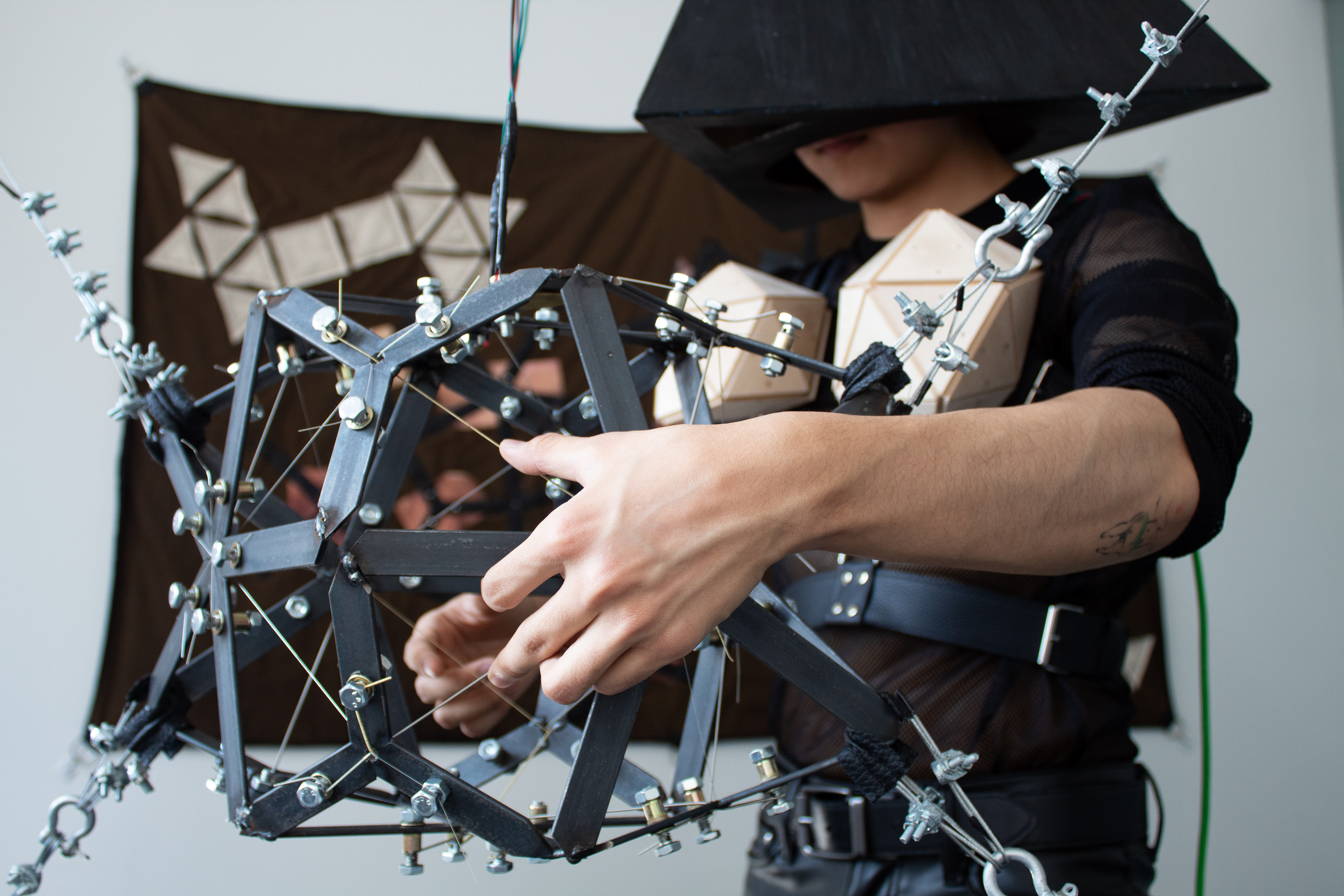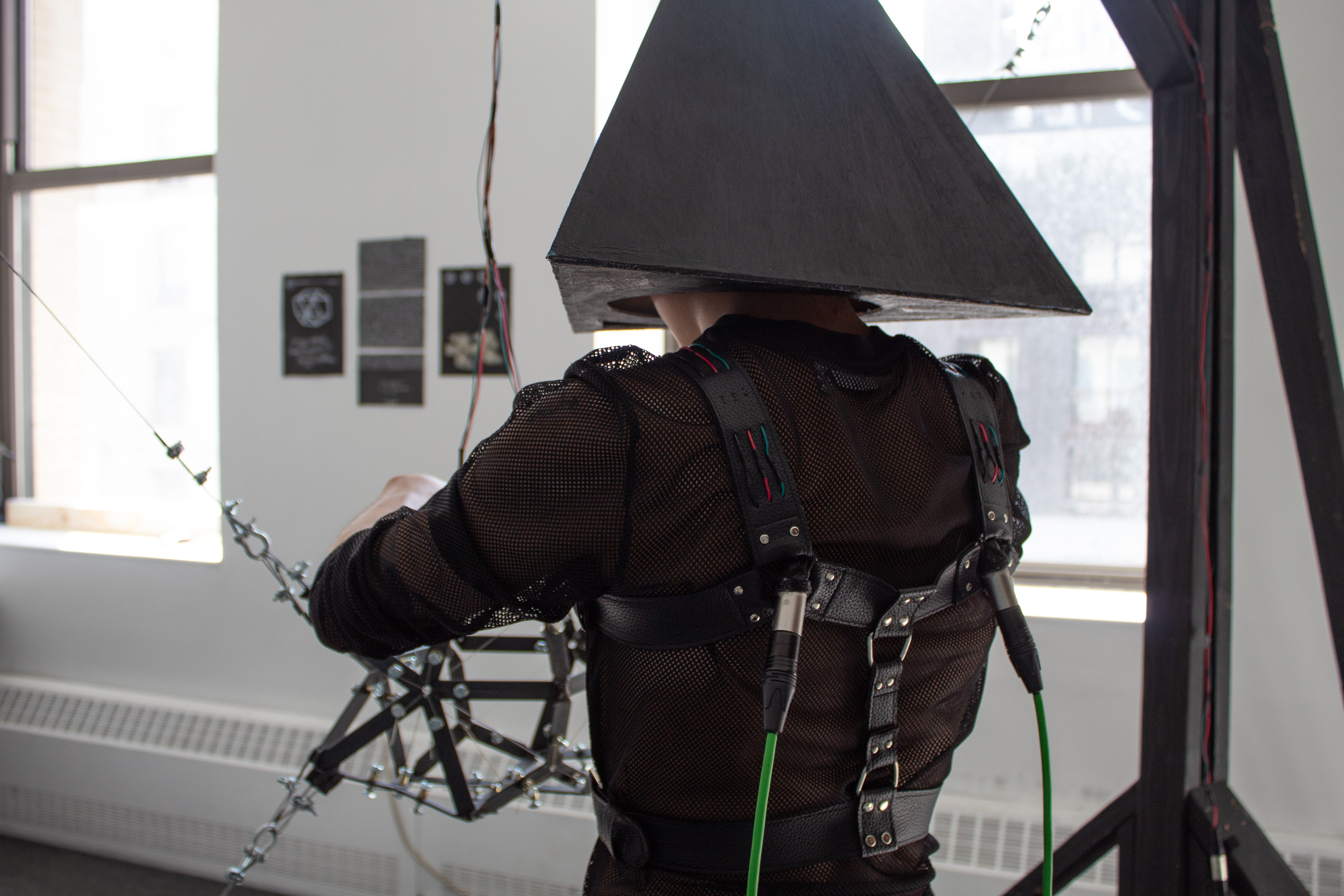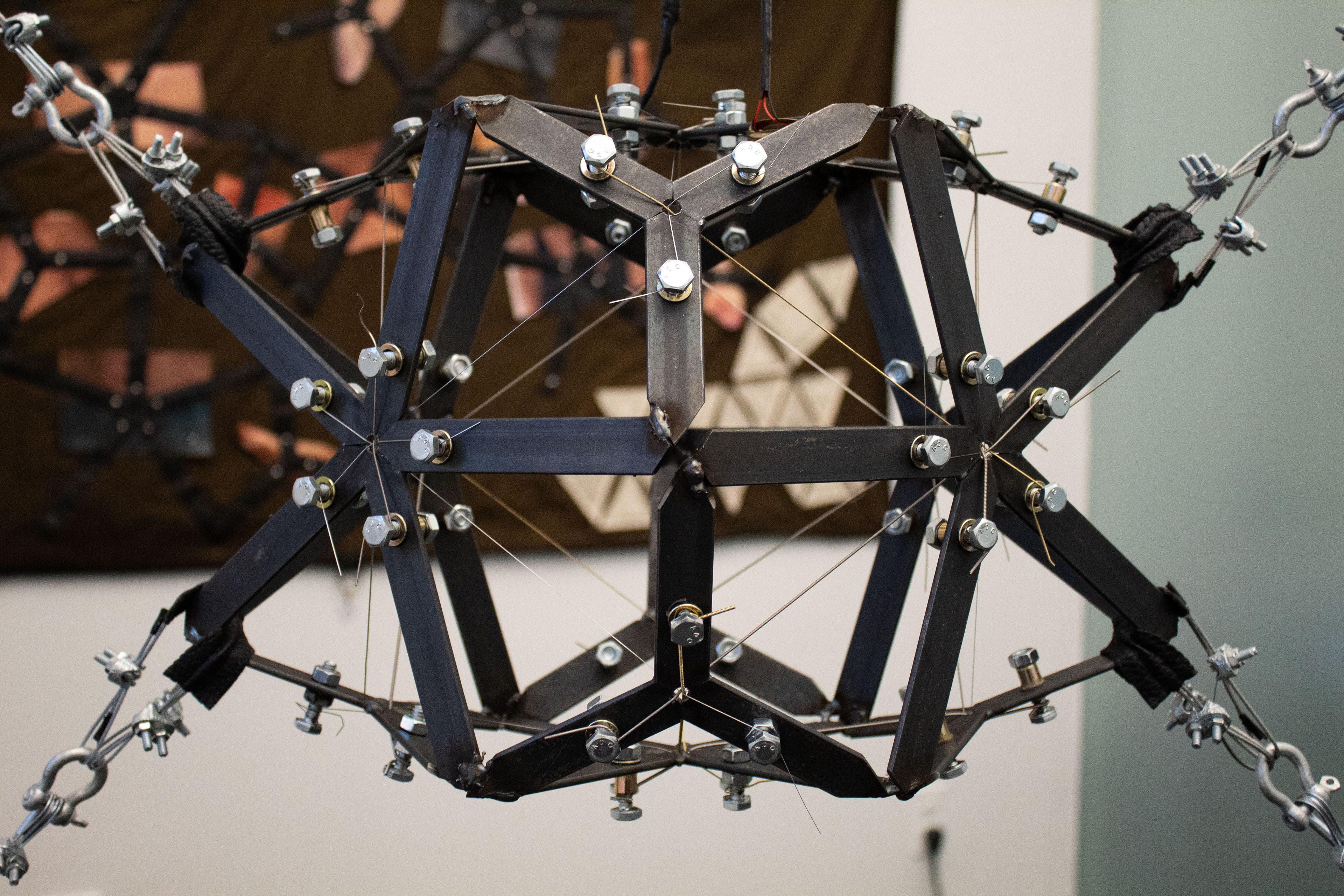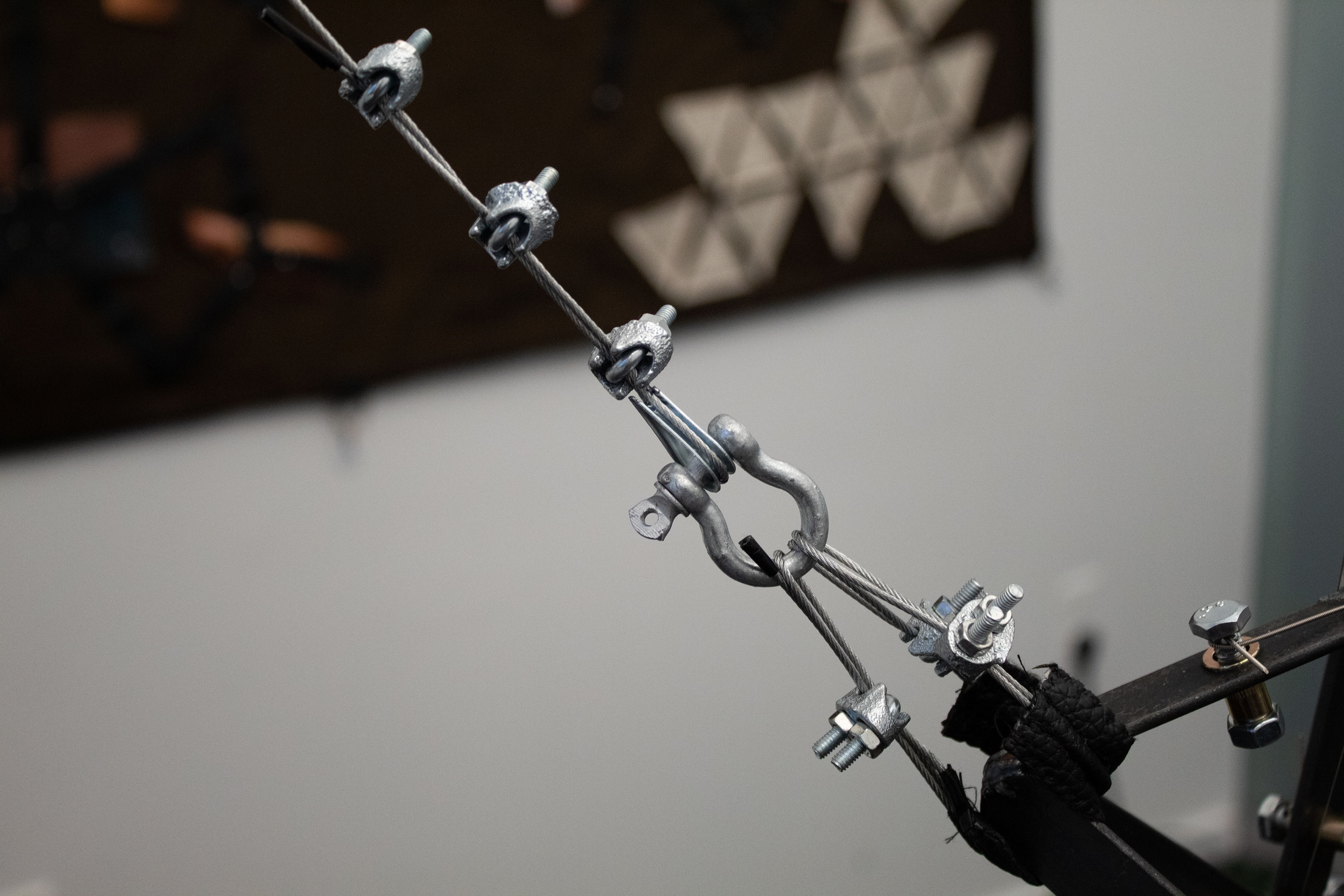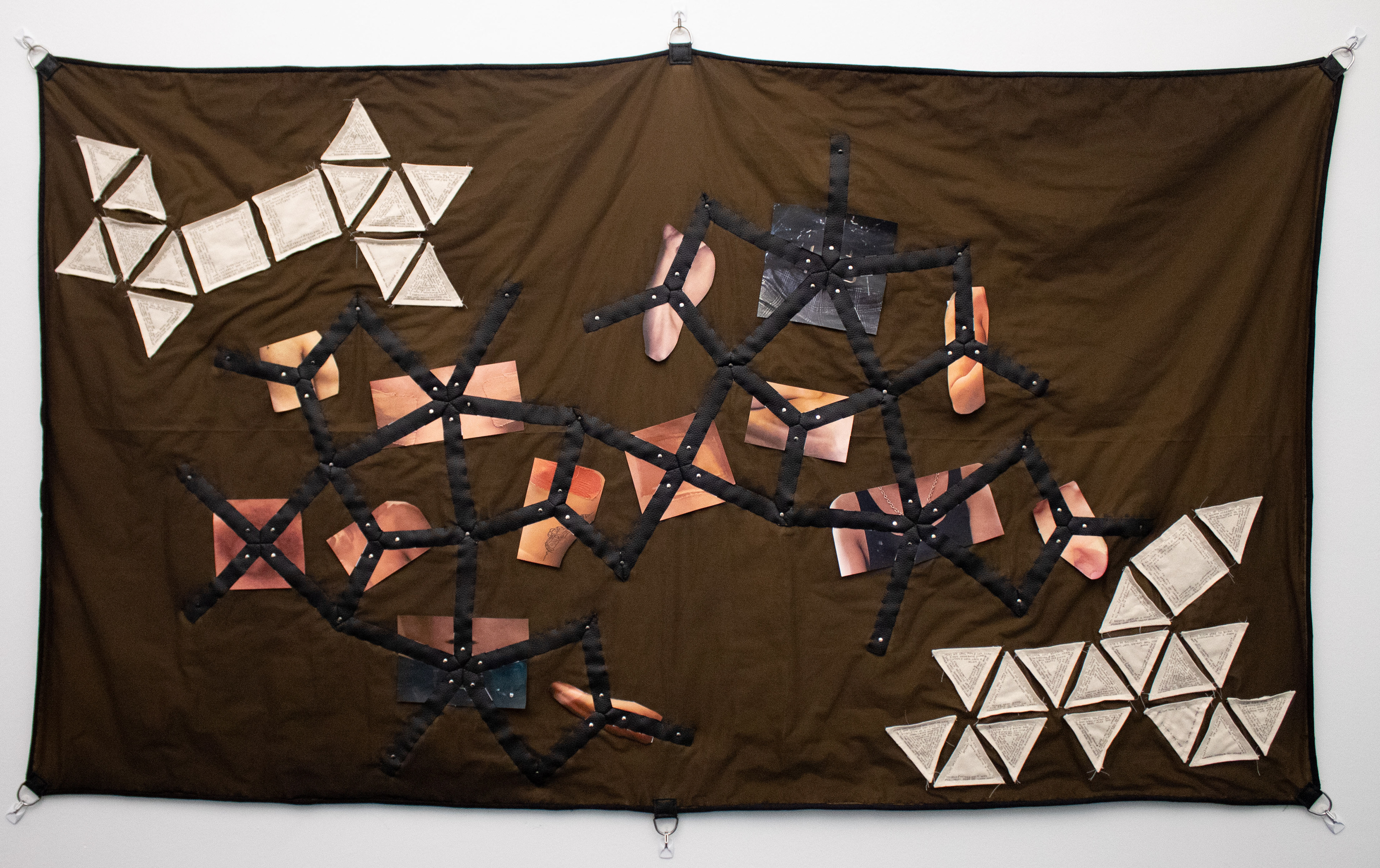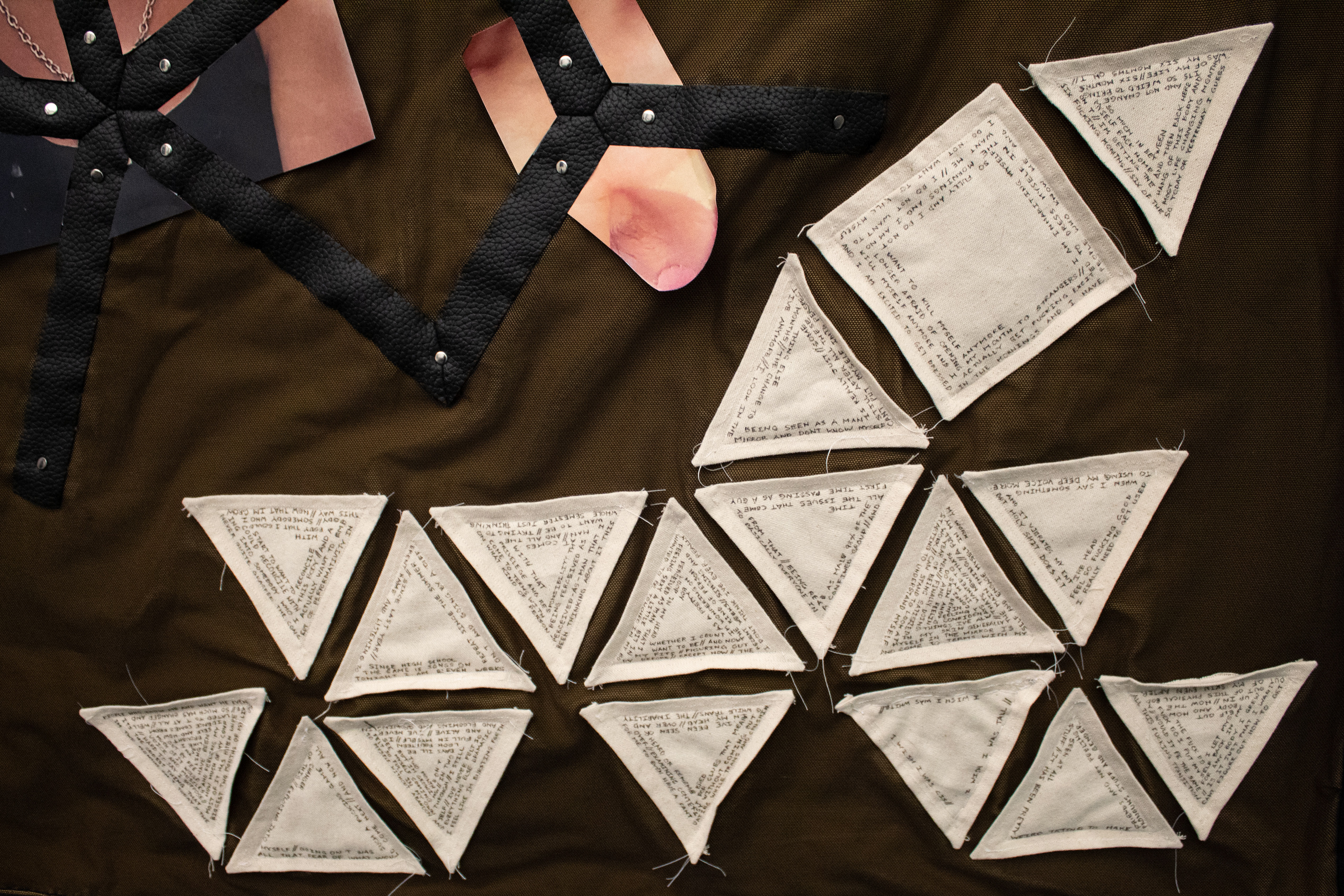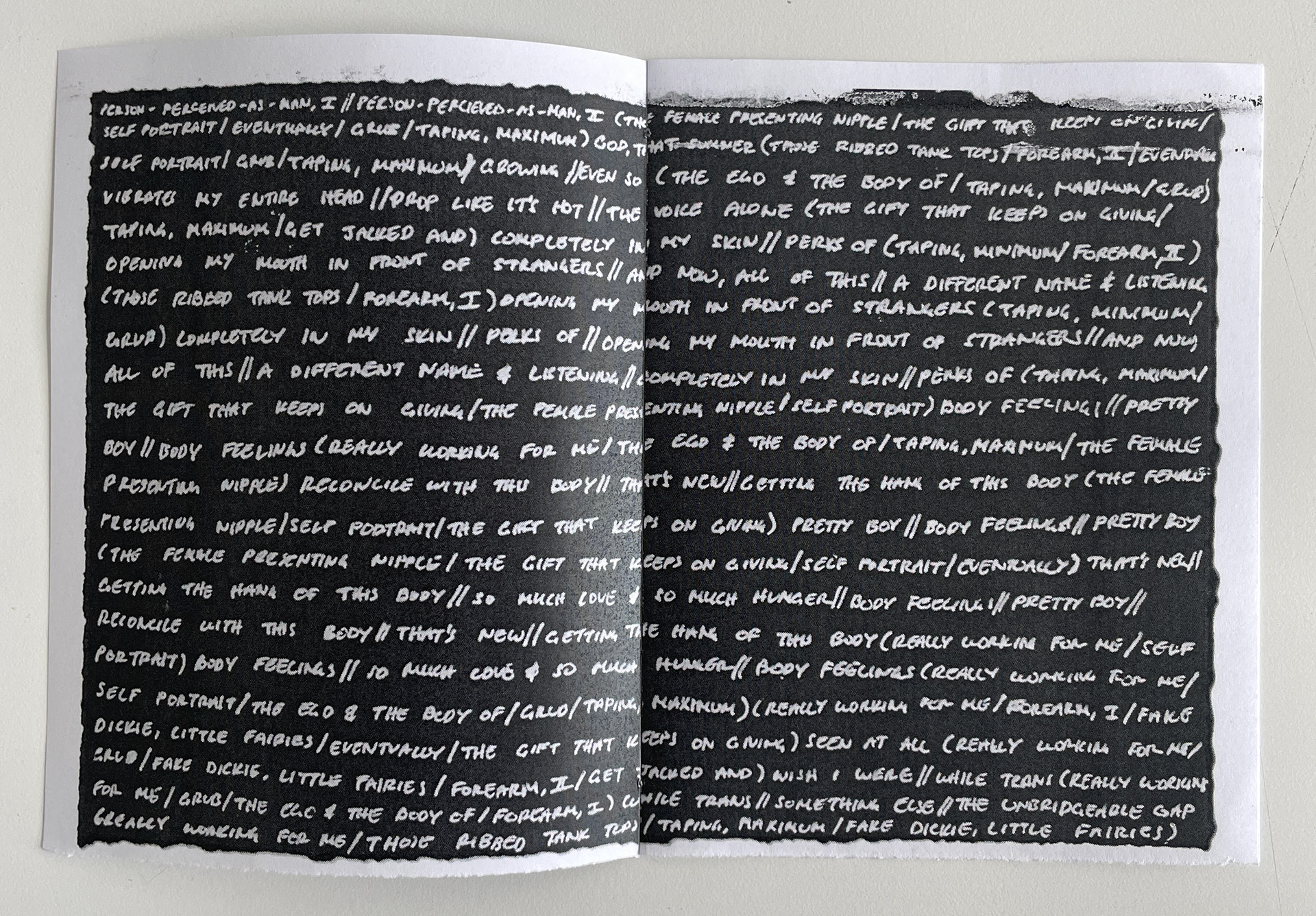Body Feelings, Op. 1 No. 1 - Rehearsal, May 2023
UNVEXED CONFORMAL BODIES
2023
composition, installation, performance
A devised musical system of instruments, notation, and performance, taking formal and structural inspiration from the 92 Johnson Solids (mathematical polyhedra) and aesthetic inspiration from gay and queer leather culture.
The first composition in this system, Body Feelings - Op. 1 No. 1, explores my experience of my first two years of transition, using body-related journal excerpts and photos of my body as compositional material. This composition acts as a personal reflection and a newfound understanding of my bodily journey of those first two years.
A detailed mathematical description of this musical system was published under the Proceedings of Bridges Math Art 2024, found here.
